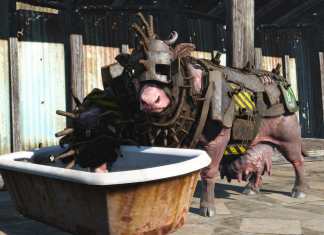One problem which had to be solved was to synchronize the discharge of the flash-light powder with the camera shutter, so that the latter would be wide open at the instant that the flash had reached its illumination peak.
A pound of magnesium powder was used for every charge. The ignition of such an amount of dazzling explosive on a dory piloted by two men, who were forced at the same time to follow the shadowy movements of the diver with his camera far below, was more than human nerves could stand. Especially was this true when it sometimes happened that the men in the boat had to wait for two or three hours, every moment anticipating the blinding and deafening detonation. They could never know at what instant the diver would find his quarry in the desired position with respect to his lens.
To overcome this nerve-racking suspense, three small pontoons were constructed to support a dry-cell battery, the flash-light powder, and the reflector. The contrivance, floating upon the surface and guided here and yon, could be handled by the diver himself, leaving the men in the dory free to follow their colleague under sea at a safe and comfortable distance from the powerful explosive, yet near enough to maintain the necessary flow of air pumped to the man beneath the surface. The mere setting of the electrical connections, however, within a few feet of the big charge of powder was a hazardous undertaking.








